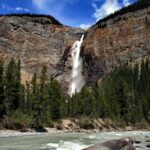Canada’s history goes back way before the country as we know it today. For thousands of years, Indigenous peoples lived on the land, each with their own cultures, traditions, and systems of government. European exploration started in the late 15th century, with French and British settlers shaping the political landscape.
But the big moment was 1867 when the British North America Act created the Dominion of Canada. This act combined three colonies—Nova Scotia, New Brunswick, and the Province of Canada—into one country. While Canada’s identity has evolved since then, 1867 is the year it was officially “made a country.”
Early Exploration and Settlement
The seeds of Canada were planted centuries earlier. In 1497, John Cabot landed on Canada’s east coast, followed by Jacques Cartier in the 1530s, who claimed the land for France. The French established “New France” along the St. Lawrence River, and the British settled in Nova Scotia and other areas.
These rival powers clashed, and their settlements had a big impact on Indigenous populations. By the 18th century, the British had control of most of the land after the French and Indian War. These early settlements laid the foundation for Canada’s bilingualism—French and English.
Confederation and Canada’s Birth in 1867
The defining moment in Canadian history was Confederation on July 1, 1867. The British North America Act (now called the Constitution Act) combined Ontario, Quebec, New Brunswick, and Nova Scotia into the Dominion of Canada with its own federal government. This day is now celebrated as Canada Day.
Sir John A. Macdonald, the first prime minister, had a vision of a transcontinental country that could rival the United States in strength and unity. Although Canada was still tied to Britain, it had its own government and Parliament.
Expansion Across the Continent
After Confederation, other provinces and territories joined:
- Manitoba (1870)
- British Columbia (1871)
- Prince Edward Island (1873)
- Alberta and Saskatchewan (1905)
- Newfoundland and Labrador (1949)
- The Canadian Pacific Railway was built in 1885 and physically linked the country from coast to coast.
- The North-West Mounted Police was founded in 1873 and helped establish law and order in the newly settled west.
Steps to Full Independence
Canada became a self-governing country in 1867, but full independence came slowly. The Statute of Westminster in 1931 allowed Canada to make its own laws without British approval. But the final step came much later with the patriation of the Constitution in 1982.
This was led by Prime Minister Pierre Trudeau and also introduced the Canadian Charter of Rights and Freedoms, which guaranteed rights like freedom of expression and equality before the law. With the Constitution Act of 1982, Canada gained full legislative independence from Britain.
Why These Dates Matter
Each key date in Canada’s journey—from 1867 to 1982—marks a chapter in its evolution from colony to nation. These dates aren’t just legal documents; they represent a growing sense of Canadian identity and a move towards inclusivity, self-determination, and national pride.
Today, Canada is known for bilingualism, multiculturalism, and Indigenous reconciliation. These values come from its layered history and its desire to learn from the past and build a fairer future.
Experience The Stories for Yourself
Learning history is cool. But you know what’s cooler? Living in the present by exploring all the iconic sites in a country. And with your new travel buddy, Canada Hustle, your trips just got much easier.

Available for both Android and iOS users, reaching any place within the city is a few taps away. Whether your heart races for zip lines or old timelines, Canada Hustle tailors the trip for you.
Conclusion: A Country Still in Progress
So, when was Canada made a country? The short answer is July 1, 1867. But the long answer spans centuries from Indigenous civilizations to European colonization, Confederation, and constitutional reform. Each date has helped shape the diverse and democratic country Canada is today.
Understanding these dates doesn’t just answer a history question—it helps us understand what it means to be Canadian in an ever-changing world.







